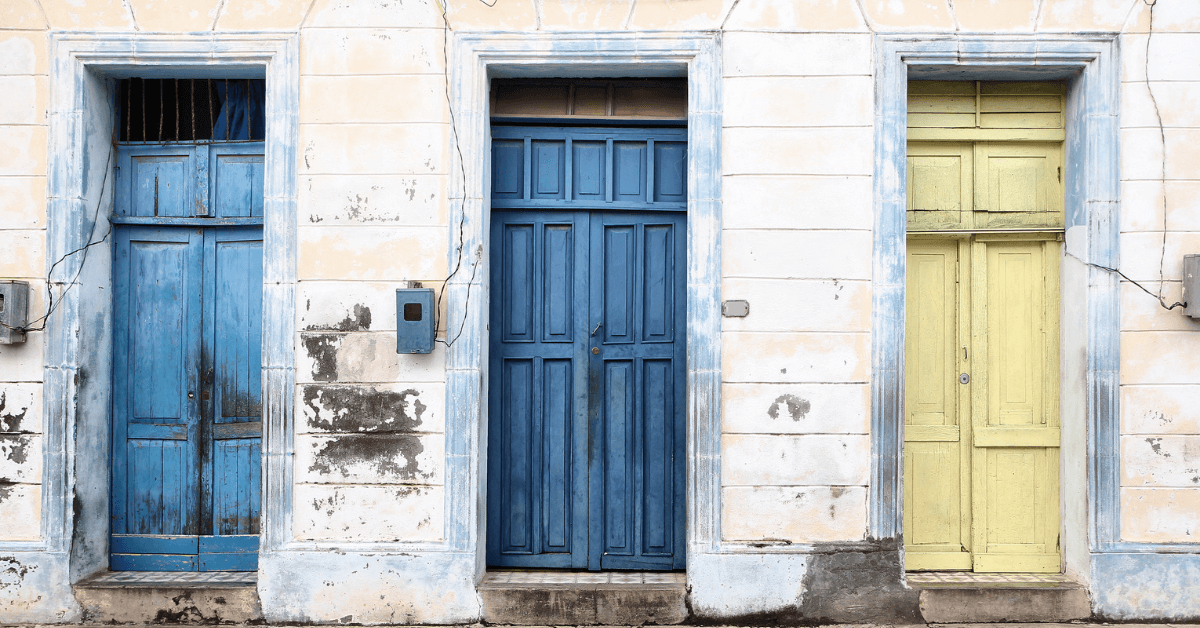Ultimate Digital Nomad Guide to Living In Cuba
Cuba is not the first place you’d think of as a digital nomad hotspot, and it certainly isn’t right for all digital nomads. Things just seem to work differently in Cuba, from accessing the internet to grocery shopping and even finding a rental apartment.
However, Cuba has some incredible advantages to offer for digital nomads that are interested in a completely unique and off-the-beaten-path experience. Cuba is the perfect place to connect to a local community and culture, something that can be a lot more challenging in places with tons of digital nomads.
Plus, how does working from some of the world’s most beautiful, unspoiled beaches sound? Or from a restored colonial mansion in Havana? Keep reading for all the details you’ll need to know if digital nomad life in Cuba is right for you, and how to make it as a digital nomad in this off-the-beaten-path destination.
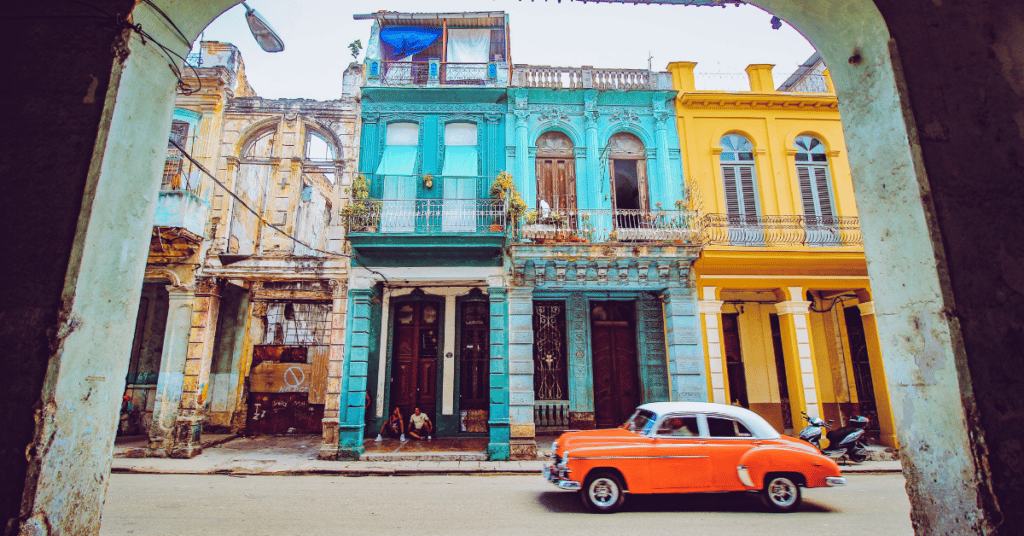
This post contains affiliate links that may reward me monetarily or otherwise when you use them to make qualifying purchases – at no cost to you. As an Amazon Associate, I earn from qualifying purchases. For more information, please read our disclosure policy.
Are There Digital Nomads in Cuba?
Cuba is not a common or traditional digital nomad hub by any means, just as for many travelers (especially American travelers to Cuba) it has been a destination often thought of as out of reach.
You won’t find a digital nomad community here like you might in Chiang Mai or Mexico City.
However, there are digital nomads in Cuba! Most are located in Havana, specifically. Digital nomads here tend to be those looking for a very unique, off-the-beaten-path and local experience, which they’ll definitely find here!
Digital nomads in Cuba also tend to have very specific jobs, which don’t require a lightning-fast internet connection 24/7, as Cuban internet is slower than you’re probably used to.
- Digital nomads that thrive here usually have flexible schedules and can work offline for most of the day.
- Digital nomads in Cuba tend to be from Canada, Latin America, or European countries rather than the United States due to the banking challenges citizens from the United States face here.
What to Bring to Cuba
Check out our Ultimate Cuba Packing List to help you pack for your trip – we’re sharing exactly what to bring to Cuba, and what we never travel without.
Why Cuba?
Off the Beaten Path
Cuba is on many people’s bucket lists as a travel destination – with good reason! – but not many people spend enough time here to dig into all that Cuba has to offer.
Outside of Havana and some of Cuba’s beaches and resorts, Cuba is a country largely untouched by tourism, but with so very much to offer. Spending a few months here as a digital nomad is the perfect way to experience all that this country has to offer.
Spending a chunk of time here, you can discover places like:
- The historic beach town of Baracoa;
- Ciénaga de Zapata National Park;
- Jardines de la Reina for some of the best scuba diving in the Caribbean;
- Pico Turquino and the Sierra Maestra mountains, where Fidel Castro and his revolutionaries camped out and launched the Cuban Revolution.
Connect
As a digital nomad, this is also the perfect destination to escape the well-worn digital nomad scenes you’ll find in Chiang Mai, Bali, or Medellin for a chance to have a more meaningful cultural exchange than you might where you’re surrounded by other digital nomads.
Cubans are some of the most connection-driven people I’ve ever met – you can meet someone and strike up a conversation on the street, and soon you’re invited to dinner and a party next weekend. This is a great place for new friends.
Disconnect
Cuba’s slower internet speed and the fact that many people don’t have data plans on their phones or internet in their houses will force you to disconnect more than you would elsewhere.
Cuba has internet, enough for many digital nomads to have no trouble with work, but because it isn’t as omnipresent as it might be back home, Cuba will make you put your phone down and enjoy what’s around you rather than your Instagram.
Perfect Weather, Caribbean Location
What could be better than the climate here and proximity to the beach no matter where you are? While the summer can get hot, Cuba’s Caribbean destination is definitely a plus. Plus, Havana is just a stunning city – check out this beautiful street photography in Cuba guide to spark some wanderlust!
Especially for digital nomads based in Havana, to be able to enjoy a major city with beaches just a short distance away is a major plus. Varadero – regularly rated one of the world’s best beaches – is just two hours east of Havana.
Read More for Travel to Cuba
Visas for Cuba
Cuba has a relatively restrictive visa and residency policy, though for digital nomads here for a shorter period of time, it isn’t an issue. Canadians have the particular good fortune of having quite a generous visa policy for Cuba.
Visa on Entry
The standard tourist visa – which must be obtained prior to landing in the country – lets citizens from most countries remain in the country for 30 days. The standard tourist visa for Canadian citizens gives them 90 days in the country.
These tourist visas can be purchased ahead of time from your airline, and don’t require submitting an application.
Visa Extension
Once in Cuba, visitors can extend their tourist visa for another 30 days – for Canadians, they’re able to extend their tourist visa for an additional 90 days. To request an extension, you can visit the office of “Dirección de Inmigración y Extranjería,” which has offices throughout Cuba.
- Havana’s largest office is located in Vedado on 17th street between Calle J and Calle K.
- I’ve used the office in the 10 de Octubre neighborhood each time and found them very helpful and (generally) not as crowded. It’s located on Calle Vista Alegre at the corner of Juan Delgado in the Víbora neighborhood of 10 de Octubre.
After using up the time on this visa extension, the visitor must leave Cuba for at least three days before returning and starting again on a new tourist visa. A quick trip to Miami or Cancun is a popular trip to renew a visa.
Residency or Long-Term Visas
Permanent residency in Cuba is reserved for those with a familial connection to Cuba, such as a Cuban spouse or child. Long-term visas are available for those with work contracts with a Cuban company or international organization, or for students.
More on Tourist Visas in Cuba
Cost of Living in Cuba
The cost of living the digital nomad Cuba life can be extremely variable based on your lifestyle – more so than I’ve seen in many other places around the world.
To put it into context, most Cubans generally earn and get by on around 60 dollars a month. Cooking for yourself, using public transport, and looking for bargains you can live quite cheaply here.
Generally, a digital nomad can expect to spend between $700 to $1000 a month, though as I mentioned, this is quite variable depending on a few factors, like the cost of accommodation and transportation, plus how much you plan to eat out.
Cost of Rent
Rent will be the most expensive thing you’ll spend on here. Monthly rent can range from around $350 for a simple one-bedroom to $800 or $900 for a modern, spacious apartment in the best parts of town.
I’d generally recommend looking at spending around $500 a month on an apartment rental.
- You can find deals for even less if you have local help! To save even more money, book a place for a week and plan to use that week to look for a more permanent place to stay by asking guest house owners for deals.
- The easiest way to find a monthly rental is through Airbnb.
Cost of Transportation
Transportation will also be a deciding factor in how much you spend. If you stick to private cabs and use them frequently, you can rack up a big expense fast. However, if you’re able to learn a few bus routes or simply stick close to your neighborhood, you can save a lot of money every month.

Digital Nomad Guide to Cuba
There may not be a lot of digital nomads here, but it isn’t hard to find a community here. While Havana doesn’t have its own digital nomad group on Facebook, many foreigners in Cuba are part of the Expats in Cuba group – you don’t have to be an expat to join. I’ve found people more than willing to connect there.
Spanish schools can also be a support as well, and offer advice about activities and things to do even if you aren’t a student. Check out Corazón Cuba and Estudio Sampere for recommendations and social events.
Coworking in Havana
With higher-speed internet springing up quickly in Cuba in just the past 5 years or so, and with it new businesses and careers that can work from anywhere, coworking is a very new idea in Havana.
Amarillo Coworking
I’m only aware of one coworking space in Havana currently, a beautiful spot in Vedado called Amarillo Coworking. Located in a converted mansion with a beautiful, shaded patio space, they have a variety of membership plans and passes available, plus internet access and plenty of social events and seminars.
Even if you don’t end up working from Amarillo, check this place out to meet people in Havana. There are a ton of people here doing incredible work.
A note to those who like to work from cafes: Most restaurants and cafes in Cuba still don’t have an internet connection. This is still a great option if you can work offline for part or all of the day – I recommend checking out El Café, my personal favorite spot in Old Havana, with incredible coffee.
Read More: 10 Best Cafes in Havana
If you must have an internet connection to work but still want to be in a lively setting, I recommend checking out lounges or cafes in hotels, which have their own wifi networks. The spaces in the Iberostar Grand Packard are great options (if the incredible view over the harbor won’t distract you).
Transportation in Havana
Havana has an extensive yet mismatched network of public and private transportation that can be challenging to navigate, though it runs through every corner of the city. My greatest word of advice is to reach out to a local to get their advice for the best way to get to your destination.
Taxis
Havana has two types of taxis: private taxis and shared taxis, referred to commonly as “máquinas.” The cost of a shared “máquina” is generally the equivalent of $1-3 USD to most places in the city at most times of the day. Private taxis will be a few dollars more.
- You can find a private taxi parked at taxi stands or outside of hotels throughout the city – they’re generally yellow. They’ll take you directly to your destination.
- Shared taxis are generally classic American cars, and run on routes across the city. You’ll find one headed towards your nearest destination and just ask the driver to let you out once you pass by your destination. Ask a local for help navigating these and finding the best route for your destination.
Buses
- Havana has public buses that run to every corner of the city on regular routes. Bus stops are (usually) marked by signs on the street with the route number.
- In the past few years, Havana has also added a fleet of yellow coach-style buses called “ruteros” that cost about $0.25 per ride, but are air-conditioned and offer a guaranteed seat. Many of these buses depart from the Parque de la Fraternidad next to the Capitolio in Old Havana.
Cuba also has an extensive network of interprovincial transportation, including shared taxis and buses that travel between cities and provinces.
The Havana bus station is known as the Terminal de Ómnibus and is located near the Plaza de la Revolución.
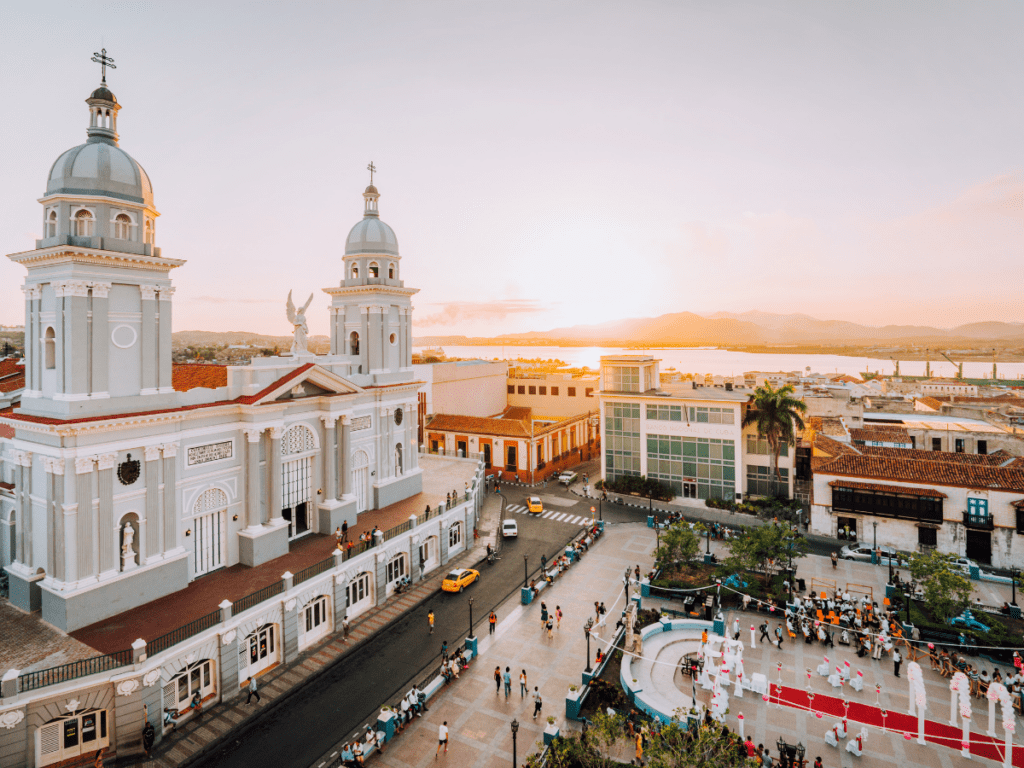
Travel Essential
Don’t think about traveling to Cuba without a good VPN (Virtual Private Network). Using a VPN while connecting to the internet is an easy way to keep your personal information safe from hackers and trackers. We’ve used NordVPN for years and couldn’t recommend it more – it’s a must for safety online, especially in Cuba.
Internet in Cuba
Generally, the biggest potential challenge that digital nomads have to consider when thinking about spending time in Cuba is how to navigate Cuba’s internet. We wrote a comprehensive guide to using the internet in Cuba that I recommend reading, but here are some key points to know about the internet in Cuba.
1. Internet Is Still Not as Widely Available as It Is Elsewhere
While internet availability is growing quickly, don’t expect to find it in cafes or restaurants. Many properties (such as Airbnbs, also known as “casas particulares” in Cuba) that rent to visitors still don’t have a private internet network.
It’s standard in hotels and a growing number of rentals are installing networks.
2. Internet Is Slower in Cuba Than It Is Elsewhere
Even where the internet is available, it is generally slower than what you’re used to. If you have a job that requires lightning-fast internet speed (teaching online comes to mind), I would be wary of being able to access internet that will be fast enough.
3. Internet in Cuba is Expensive
Unless internet access is free for use where you’ll be staying, internet access in Cuba generally costs $1 an hour. Internet access is available by purchasing a card for that amount that provides a passcode for an hour of internet use (see our complete guide to the internet in Cuba for more specific details). If your job requires you to be online a lot, this is definitely a cost to consider.
If you have a job that requires internet access but isn’t tied to specific speed requirements, you shouldn’t have an issue – just make sure the rental you’re staying at has internet access.
If you’re thinking about spending time in Cuba, you’ll need to get a VPN (a virtual private network) to access the internet as you are used to.
Because of the economic sanctions of the United States against Cuba, a VPN is necessary to access certain websites and services like Paypal that are blocked from doing business in Cuba. Check out our recommendation for the best VPN to use in Cuba, specifically.
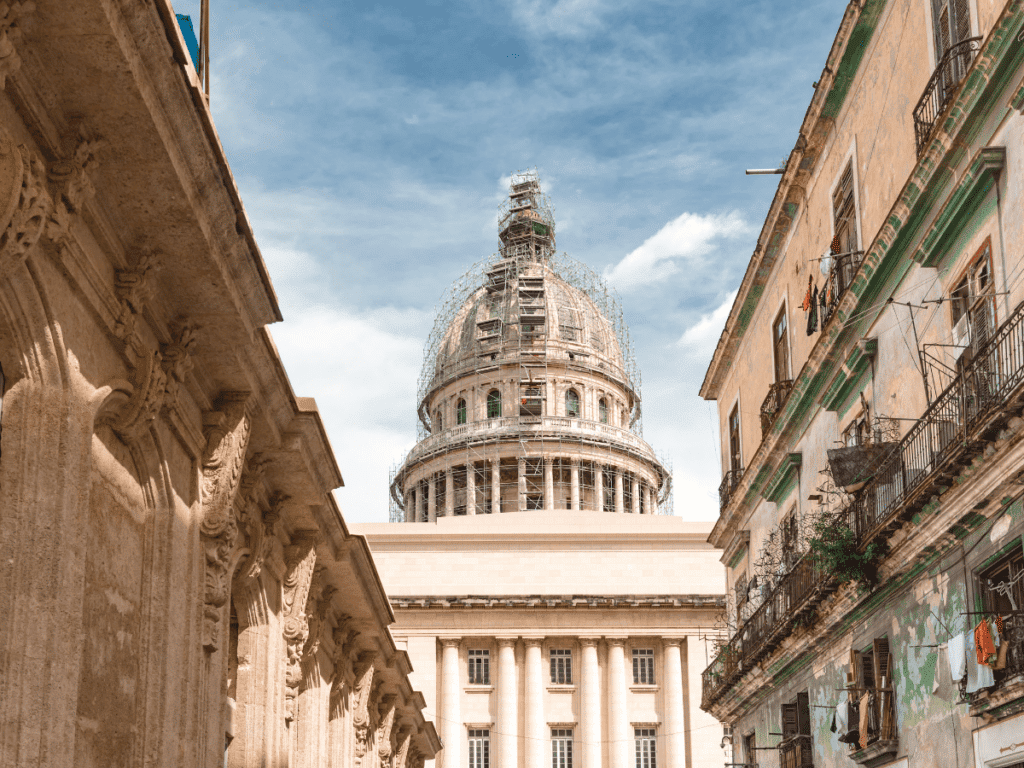
Banking in Cuba
Banking in Cuba for citizens of countries other than the United States is similar to what you’ll experience in most other places, though you’ll find very few international banks with branches here.
As most digital nomads rely heavily on online banking, it’s important to have a VPN service to make sure you’ll have access to those websites while in Cuba, as some financial services such as Paypal and a constantly-changing list of others are blocked by the United States for use in Cuba.
Check out our guide to the best VPNs for use in Cuba before you travel – it’s a must to understand how it works navigating Cuba as a digital nomad.
Banking in Cuba for U.S. Citizens
If you’re from the U.S., you will likely have a greater challenge handling banking in Cuba due to the sanctions of the United States against Cuba, preventing U.S. banks from doing business in Cuba. This means that debit cards and credit cards tied to U.S. banks will not work here.
If you are a U.S. citizen but have a bank account or credit card account that is not U.S.-based, you won’t have this issue.
Most travelers from the United States are only able to work around this by bringing USD in cash to the island with them, as much as they estimate they’ll need for their time in Cuba. USD are easily convertible to Cuban pesos once in Cuba.
This is obviously not an ideal situation, though if you won’t be in Cuba for long it isn’t as challenging as you’d think.
- To avoid some of the hassles and decrease the amount of cash you’ll need, I recommend making bookings through online platforms for anything you can, such as your rental through Airbnb rather than paying in cash.
- It’s also important to note that Western Union and Xoom no longer operate in Cuba, and sending cash from abroad is increasingly challenging.
Weather in Cuba
The weather and Caribbean location in Cuba is one of the main draws for visitors to Cuba, and rightfully so. The weather here is beautiful – in one of my first long trips here during Cuba’s “winter,” we wore shorts and t-shirts every day.
Cuba’s Seasons
- Dry Season: November through April. This season is generally slightly cooler and most parts of the country enjoy more sunshine.
- Rainy Season: May through October. This season is generally rainy though not every day. Rainy days will generally consist of a period of rain in the afternoon, if not throughout the day. Hurricane season in the Caribbean lasts from July to November, with the height of the season in September and October.
Things To Do in Cuba
Explore Havana
There are so many things to do in Havana, so many places to explore, and unforgettable activities that this article would stretch on and on if I tried to list them all.
Here are some absolute favorites:
- Get the best view of the city from the other side of the harbor. Watching the sunset at the base of the Christ statue is easily the best sunset spot in the city, framed by the skyline.
- Drink your weight in coffee and try the delicious sourdough at my favorite cafe, El Cafe in Old Havana.
- Watch a movie at the Yara. Go to one of the many film festivals in Havana that take place throughout the year (my favorite is the Latin American Film Festival in December).
Check out some of our other Havana guides to help you enjoy this awesome city even more:
- Ultimate Travel Guide to Havana
- Where to Stay in Havana
- Best Casas Particulares in Old Havana
- Best Casas Particulares in Vedado, Havana
- Best Cafes in Havana and Best Brunch Spots in Havana
Go to the Beach
You’re never too far from the beach in Cuba. While there are beaches closer to Havana, the nearest white-sand beach is Varadero, and it’s absolutely worth a visit.
- If you have more time in Cuba, venture further out to explore Playa Ancón when you visit the unmissable Trinidad.
- Cayo Coco and Cayo Guillermo are two cays off the northern coast of Cuba known for their absolutely stunning beaches.
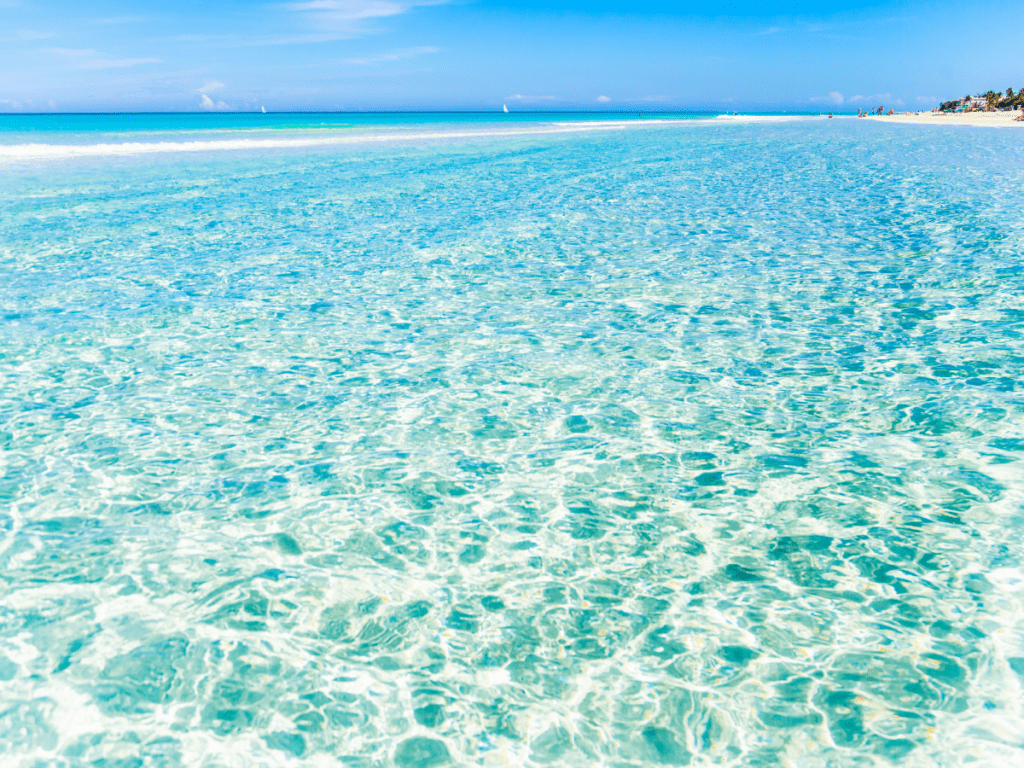
Enjoy Nature and Hike
Cuba might be known for its beaches, but there is plenty of nature and hiking to enjoy as well, and a ton to see off the beaten path.
- Pico Turquino is Cuba’s highest mountain, located in the Sierra Maestra mountains in the eastern part of the island, and a very popular hiking destination. You can visit the original barracks and field hospital built by Fidel Castro and Che Guevara during the Cuban Revolution. The view from the top is incredible.
- Visit Soroa, about an hour to the east of Havana (near Viñales), to discover hidden waterfalls with a blue swimming hole after an easy hike.
Check out our complete guide to the best hiking in Cuba for even more recommendations!
Money-Saving Tips for Cuba
Saving Money on Food and Eating Out
Choosing where you eat out and what you eat is one of the easiest ways to save money while in Cuba. There is a very clear divide between places that cater to travelers and tourists, and those for locals.
In a local spot, you can get a full meal for less than two dollars, complete with a main and sides. In a place that caters to tourists, you won’t get a coffee for that price.
Grocery Shopping
Shopping for groceries is an easy way to save money, but it is different from what you might be used to in other countries:
- Certain grocery stores only accept payment in foreign currency (called MLC) pre-loaded onto a debit card. You can get a card and load it at a bank.
- Ask a local where the closest stores are to where you’ll be staying – more are opening in Havana regularly.
- These stores tend to have the greatest variety of products.
- You’re unlikely to find everything you need in one place. While there are stores that have a wide variety of items, don’t expect to find a Walmart or Target here.
- You will only find fruit and vegetables seasonally here in the markets – out of season you may just not find them.
- Some days the markets will have ten or twenty types of fruit and vegetables to choose from and some days they won’t. Stock up when you can.
Pack Wisely
Making a packing list for Cuba as a digital nomad isn’t like making a Mexico packing list for all-inclusive resort vacations! There are a strange array of items that are nearly impossible to find in Cuba.
Chief among these includes technology. If your computer or hard drive is on its last leg and you’re planning on staying in Cuba for a while, upgrade before you get here.
Sometimes it can be more expensive to buy something in Cuba than it would be to fly to Miami or Cancún, purchase it there, and then fly back! Don’t expect to find the brands of beauty products you’re used to using here. Bring what you can’t live without.
Check out my entire list of things to bring to Cuba, too – you’d be surprised!
What to Pack for Cuba
Check out our Ultimate Cuba Packing List to help you pack for your trip – we’re sharing exactly what to bring to Cuba and what we never travel without.
Take Public Transport
Ask for a local’s advice and direction, and try public transport. It is so inexpensive and will save you so much money over private taxis that it is well worth overcoming the learning curve!
Count on Locals To Help You
Cubans are some of the most truly incredible people I’ve ever met. Whenever I’ve asked for help from a stranger I’ve seen people bend over backwards for me. They also know the secret ways to save money here better than anyone else.
Reach out to the host at your Airbnb or a new friend for advice on the price you should be paying for groceries in the neighborhood, where to exchange money, or where to find something you’re looking for.
Learn Some Spanish!
English is not commonly spoken in Cuba, even in places you might expect it would be, such as those that generally cater to tourists. Learning some key phrases in Spanish will be a big, big help here in navigating the country and enjoying your time.
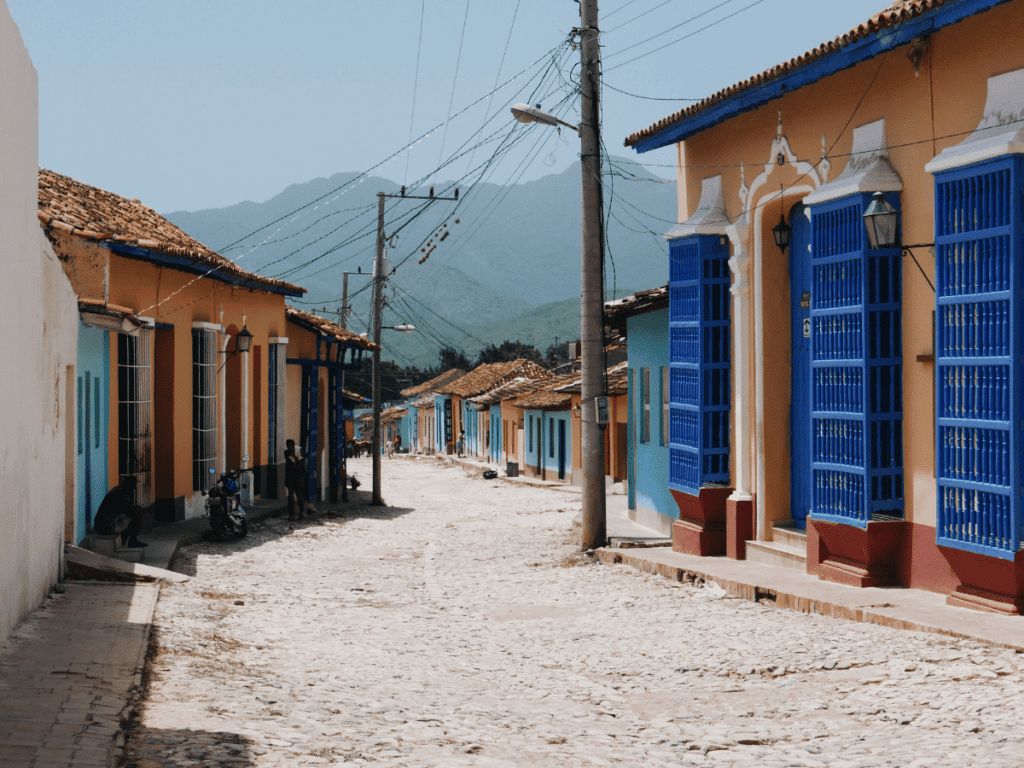
What to Pack for Cuba
- Your favorite beauty products. If you’re committed to a specific brand, you’re almost guaranteed not to find it here. Any specialty products like micellar water, makeup wipes, serums, etc. just won’t be found here. I love GoTubes for packing liquids – they let you get out every last drop.
- Sunscreen! I’ve found sunscreen to be difficult to find here, or wildly expensive when I have found it. Make sure you bring enough.
- SteriPen – you shouldn’t plan on drinking tap water in Cuba, so the SteriPen is a must – use it to purify water from any source almost instantly!
- Water Bottle (with a water filter).
- All your tech equipment. Almost any tech product is imported from the United States or Europe, and will be harder to find and more expensive than back home.
- NordVPN or another Virtual Private Network service. Not a physical product, but something you shouldn’t travel without! Check out our guide to using a VPN for international travel for more on why this is crucial for travel.
- Comfortable walking shoes!
- Tampons or a menstrual cup – I’ve never found tampons here, and the pads here are horrendous. This is the perfect place and time to try a menstrual cup if you haven’t yet.
- A travel plug adapter and converter. Some places here use 220V and some use 120V, so come prepared for both.
- Travel insurance: You’ll need it in Cuba – it’s a requirement for entering the country, and a great thing to have, wherever you travel. Check out our guide to travel insurance for Cuba for more details.
Don’t Bring
There is a small but random list of items you’re not allowed to bring into the country.
- A drone. They aren’t allowed here and won’t pass through airport security.
- Pornography of any kind – customs will seize it!
- Books, magazines, or newspapers that might be considered to go against the Cuban government. My brother was questioned in the customs office for having a book he had to read for a college class that had Donald Trump’s face on the cover.
- Anything with an antennae or radio communication capabilities, like a walkie-talkie.

Carley Rojas Avila is a bilingual travel writer, editor, content marketer, and the founder of the digital travel publications Home to Havana and Explorers Away. She is a serial expat and traveler, having visited 40+ countries and counting. Carley has written for publications like Travel + Leisure, MSN, Associated Press, Weather Channel, Wealth of Geeks, and more. Find her front row at a Bad Bunny concert, befriending street cats, and taste-testing every pizza in Havana.

